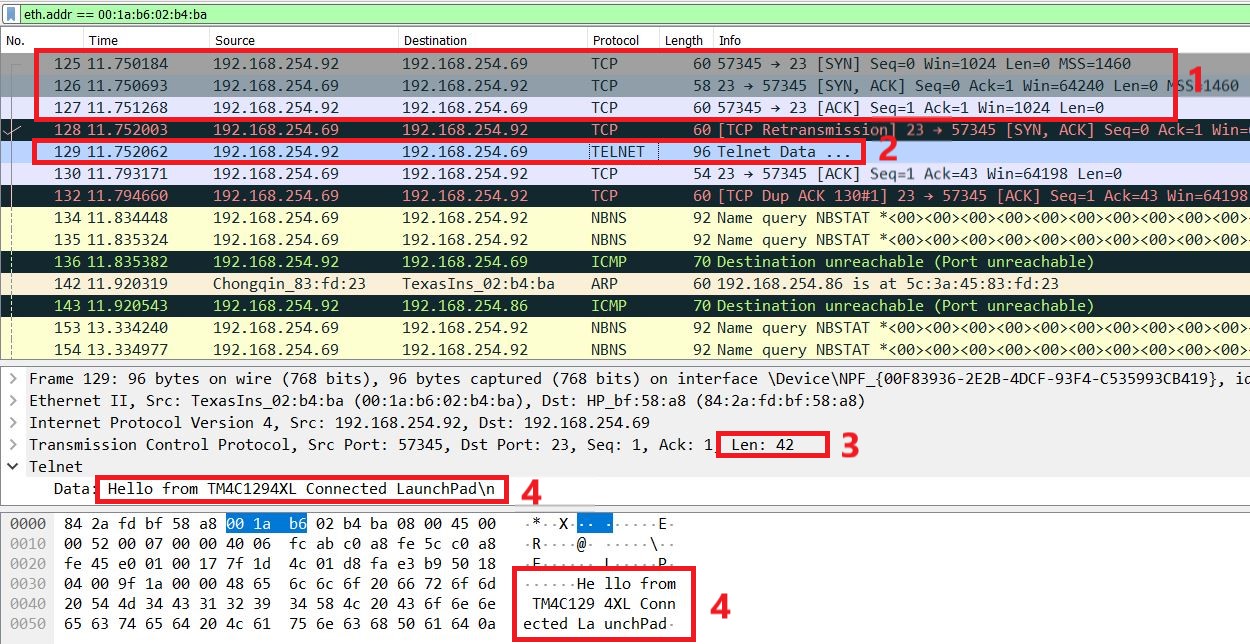SPMA080 April 2021 TM4C1292NCPDT , TM4C1292NCPDT , TM4C1292NCZAD , TM4C1292NCZAD , TM4C1294KCPDT , TM4C1294KCPDT , TM4C1294NCPDT , TM4C1294NCPDT , TM4C1294NCZAD , TM4C1294NCZAD , TM4C1299KCZAD , TM4C1299KCZAD , TM4C1299NCZAD , TM4C1299NCZAD , TM4C129DNCPDT , TM4C129DNCPDT , TM4C129DNCZAD , TM4C129DNCZAD , TM4C129EKCPDT , TM4C129EKCPDT , TM4C129ENCPDT , TM4C129ENCPDT , TM4C129ENCZAD , TM4C129ENCZAD , TM4C129LNCZAD , TM4C129LNCZAD , TM4C129XKCZAD , TM4C129XKCZAD , TM4C129XNCZAD , TM4C129XNCZAD
- Trademarks
- 1 Introduction
- 2 Application Examples
- 3 Application Setup
- 4 Download and Import the Ethernet Examples
- 5 How to Create an Ethernet Application for TI-RTOS NDK
- 6 Enet_tcpecho_server_tirtos Example Overview
- 7 Enet_udpecho_server_tirtos Example Overview
- 8 Enet_httpServer_tirtos Example Overview
- 9 Enet_dns_tirtos Example Overview
- 10Enet_sntp_tirtos Example Overview
- 11Enet_tcpecho_client_tirtos Example Overview
- 12Enet_udpecho_client_tirtos Example Overview
- 13Enet_httpget_tirtos Example Overview
- 14References
11.3 Run the enet_tcpecho_client_tirtos Example
After the example has run, it will display the client IP address acquired from the DHCP server on the CCS console window. Once the client connects to the SocketTest server, it will send a “Hello from TM4C1294XL Connected LaunchPad\n” greeting message to the server.
Look at the conversation field in box 3 of Figure 11-1 where it displays the “Hello from TM4C1294XL Connected LaunchPad\n” message from the client IP address 192.168.254.92 as soon as the server accepts the connection. Go to the Message field in the SocketTest shown in box 4 and type some message. Whatever message is entered is echoed by the client. In this example, the message entered is “This is a TCP Echo Client example for TI-RTOS NDK\n\r” with a total length of 53 characters.
Examine the Wireshark capture in Figure 11-2.
- As discussed previously, TCP is a connection-based protocol. Here you see the SYN segment sent by the client 192.168.254.92 to the server 192.168.254.69 to establish a connection and the ACK segment from the server to accept the connection.
- After the connection is accepted, the client sends the “Hello from TM4C1294XL Connected LaunchPad\n” message. This is shown as Telnet Data in frame 129.
- Notice the length of the message is 42 bytes which matches the total number of characters in the greetings message.
- The content of the message captured is matching the greeting that was sent by the client.
 Figure 11-2 Client Server Wireshark Capture for Enet_tcpecho_client_tirtos
Figure 11-2 Client Server Wireshark Capture for Enet_tcpecho_client_tirtos